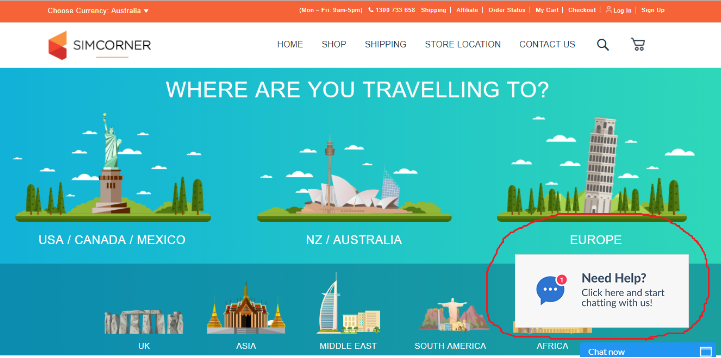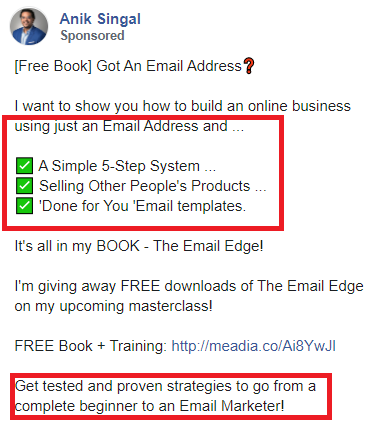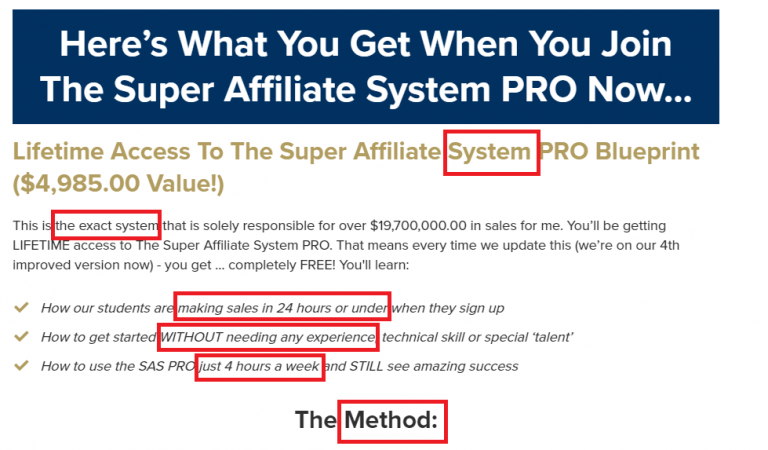Generating Qualified Leads On Autopilot
This blog post will provide a reliable, proven system for generating qualified leads in your business.
In this detailed guide, you’ll learn everything you need to build a lead generation machine in your business.
I’m going to cover…
- How qualified leads differ from unqualified leads and why it’s essential to focus your efforts on qualified leads.
- How to develop an offer that is designed to attract qualified prospects to your business. This offer will be used to capture contact details from your potential customers. It is a crucial component of the lead generation system.
- How to build a high-converting opt-in page on your website. Including best practices to maximize your conversion rate.
- How you can automate follow-up with your leads pipeline to save time and money.
- The two main traffic sources that will fuel your lead generation system.
What is a Qualified Lead and how is it different from an Unqualified Lead?
A qualified lead is a potential customer who has shown a genuine interest in your product or service. They are more likely to become a paying customer.
These individuals have already demonstrated certain characteristics or behaviors that align with your ideal customer profile.
On the other hand, an unqualified lead is a potential customer who may have expressed some interest but does not meet the specific criteria that make them a good match for your business. They may not have the need for your product, the budget to afford it, or the authority to make purchasing decisions.
The Importance of Qualified Leads in Improving Conversion Rates and ROI
Attracting qualified leads is crucial for improving conversion rates and Return on Investment (ROI) for several reasons:
Higher Conversion Rates: When you focus your marketing efforts on qualified leads, you’re more likely to convert them into paying customers. Since these individuals are already interested in what you offer, they are more receptive to your messaging and are closer to making a purchase decision.
Reduced Wasted Resources: By concentrating on qualified leads, you avoid wasting time, effort, and resources on individuals who are unlikely to convert. This allows you to allocate your marketing budget more efficiently.
Improved Sales Productivity: Sales teams can work more efficiently when they are dealing with qualified leads.
Since these leads are more likely to convert, sales representatives can focus their efforts on building relationships and closing deals, rather than chasing uninterested prospects.
How To Capture Leads
A lead is a potential customer who has expressed interest in your product or service by providing their contact information or showing interest in your offerings.
To attract qualified leads on auto-pilot you will need a compelling gateway offer. This is sometimes referred to as a lead magnet.
A lead magnet is a valuable and relevant incentive that a business offers to potential customers in exchange for their contact details, such as email addresses or phone numbers.
The purpose of your gateway offer or lead magnet is simply to bring new people into your funnel. You’re not trying to profit from this offer. The profit will come later.
It’s a crucial part of the online marketing funnel as it entices prospects to take action and provide their information, allowing businesses to build a targeted and engaged email list for further marketing efforts.
Your offer or lead magnet doesn’t necessarily need to be given away for free. You can charge a small price for this initial offer. But remember, the higher the price point, the fewer people you’ll have opting into your funnel.
Importance of a Compelling Offer
Lead Generation: A compelling offer acts as a powerful lead generation tool. It attracts potential customers and encourages them to share their contact information, enabling businesses to expand their reach and nurture leads effectively.
Engagement and Trust Building: By providing value upfront through the lead magnet, businesses can establish trust and credibility with their audience. This initial positive interaction can lead to increased engagement and willingness to consider future offers.
Segmentation and Personalization: The contact details obtained through lead magnets help businesses segment their audience based on specific interests and pain points. This enables personalized marketing strategies, enhancing the overall customer experience.
Tips for Identifying Pain Points and Tailoring the Offer
The gateway offer you provide in your lead generation funnel should solve a pain point for your target audience. It should be tailored based on who you want to attract.
Know Your Target Audience: Conduct thorough market research to understand your target audience’s needs, desires, and pain points. Identify their challenges and problems that your product or service can solve.
Offer a Specific Solution: Your lead magnet should address a specific pain point or offer a clear solution to a common problem. Be precise in your messaging to show your audience that you understand their needs.
Provide Immediate Value: Ensure that your offer delivers value from the moment it is received. Whether it’s a useful resource, actionable tips, or a time-saving solution, make sure it provides tangible benefits to the prospect.
Examples of Offers for Different Service-Based Businesses:
Digital Marketing Agency: Offer a free downloadable e-book or guide titled “10 Proven Strategies to Boost Your Online Presence and Increase Leads.” This lead magnet addresses the pain points of businesses looking to improve their digital marketing efforts and attract more customers.
Fitness Coaching Services: Provide a free 7-day workout and meal plan tailored to different fitness goals (weight loss, muscle gain, etc.). This offer appeals to individuals seeking a structured and personalized fitness program to achieve their health objectives.
Business Consulting Firm: Offer a complimentary 30-minute strategy session to help businesses identify growth opportunities and overcome challenges. This free consultation caters to companies looking for expert guidance to take their business to the next level.
Lead Magnet Caution
A lot of so-called digital marketing experts will advocate for low-friction lead magnets such as free e-books or a free cheat sheet.
The rationale behind this is that it will allow you to capture more leads at a lower cost. These leads then enter your funnel and you can convert them into paying customers later on.
Unfortunately, giving away freebies like this will attract a lot of unqualified leads into your system. Leads that are unlikely to ever convert into paying customers.
I’m not saying you should never try this strategy. It can be worth testing and can work well in some businesses.
But I would much rather you promote an offer like a free quote or free consultation. This type of offer will attract leads who are much closer to making a purchase decision.
Yes, your cost per lead will typically be higher than promoting a free ebook. But your lead to sale conversion rate will be much higher. And your sales team won’t be wasting valuable time chasing up freebie seekers.
The Opt In Page
The purpose of an opt-in page is to present your offer and capture the contact information of potential customers who are interested in your offer or lead magnet.
An opt-in page, also known as a landing page or squeeze page, is a dedicated web page designed with a clear and persuasive call-to-action (CTA) to encourage visitors to provide their contact details in exchange for the offer.
Best Practices For A High Converting Opt In Page
When designing opt-in pages, it’s essential to create visually appealing and user-friendly experiences to maximize conversions and capture leads effectively. Here are some best practices to consider:
Clear and Compelling Headline: Use a concise and attention-grabbing headline that clearly communicates the value proposition of your offer. It should be relevant to the target audience and encourage them to take action.
Engaging Visuals: Incorporate high-quality images or videos that align with your offer and resonate with your audience. Visuals should complement the content and help convey the benefits of the opt-in offer.
Minimalist Design: Keep the design clean and clutter-free. Avoid overwhelming the page with too many elements or distractions. A simple layout helps users focus on the primary call-to-action (CTA).
Strong Call-to-Action (CTA): Use a prominent and compelling CTA button that stands out from the rest of the page. Make it clear and action-oriented, indicating what users will get after opting in.
Mobile Responsiveness: Ensure that the opt-in page is mobile-friendly, as a significant portion of users access websites from their mobile devices. Test the page on different screen sizes to ensure a seamless experience.
Trust Signals: Include trust-building elements such as customer testimonials, security badges, or logos of reputable brands you’ve worked with. These elements instill confidence in users about your offer.
Succinct Form Fields: Keep the form fields simple and ask for minimal information. Long and complex forms may discourage users from completing the opt-in process.
Progress Indicators: If your opt-in process requires multiple steps, use progress indicators to show users how far they’ve come and how much is left to complete.
Exit-Intent Popups: Consider implementing exit-intent popups to capture leads from visitors who are about to leave the page. Offer an additional incentive or reminder of the value they’ll receive.
A/B Testing: Continuously test different elements of the opt-in page, such as CTA text, colors, images, and form fields. A/B testing helps optimize the page for better conversion rates.
Copy: Clear and concise copy on your opt-in page is essential for effective communication of your offer’s value. With short and straightforward language, visitors can quickly grasp the benefits without feeling overwhelmed.
Screening Questions
Screening questions are specific questions strategically placed within the lead generation funnel to qualify potential leads based on certain criteria.
Their purpose is to identify and separate qualified leads from unqualified ones, ensuring that only promising prospects continue through the funnel.
By strategically incorporating these questions, you can identify potential customers who align with your target audience and are more likely to convert into valuable prospects.
Your screening questions should be specific to your business. For example, if you offer marketing services for e-commerce businesses, you may ask about their current monthly revenue or growth goals to gauge their fit.
When designing screening questions, strike a balance between gathering relevant information and not overwhelming potential leads.
Keep the questions concise and use straightforward language to prevent confusion. Aim to filter out unqualified leads efficiently, guiding respondents through a seamless opt-in process. Ultimately, well-crafted screening questions enhance lead quality, saving both time and resources by directing your efforts towards the most promising prospects.
Below are some examples of screening questions that could be included in a marketing funnel..
Personal Fitness Trainer
Screening Questions:
a. What are your fitness goals? (e.g., weight loss, muscle gain, overall fitness)
b. How many times a week are you willing to commit to personal training sessions?
c. Do you have any pre-existing medical conditions that may impact your ability to engage in certain exercises?
Financial Advisory Firm
Screening Questions:
a. What is your current net worth and investment portfolio size?
b. What are your primary financial goals? (e.g., retirement planning, wealth preservation, college funding)
c. Are you interested in comprehensive financial planning or specific investment advice?
The above screening questions for each service-based business help qualify leads based on specific criteria related to the services they offer.
By asking these questions early in the lead generation process, the businesses can identify potential clients who align with their target audience and are more likely to benefit from their services. This saves time and resources, allowing the businesses to focus on nurturing and converting high-quality leads.
Automated Email Sequence
An automated email sequence is a powerful tool for marketers to nurture leads and guide them towards becoming customers. It involves sending pre-scheduled and targeted emails automatically based on specific triggers or actions taken by leads or customers.
Here’s how it works..
Trigger and Automation: When a lead takes a specific action, like entering their details on your opt-in page. Subsequent emails are then sent at predetermined intervals.
Lead Segmentation: Leads can be categorized into different groups based on demographics, interests, behavior, or buying stage. This segmentation allows marketers to create targeted email campaigns that resonate with each group’s unique preferences.
Personalized Email Content: Personalization is a critical aspect of successful automated email sequences. By using data collected from lead interactions and proper segmentation, marketers can tailor the email content to be more relevant to each recipient. This might include using the recipient’s name, referencing their past interactions, or recommending products based on previous purchases.
Nurturing Leads: The main goal of automated email sequences is to nurture leads over time. Instead of bombarding them with generic emails, the sequence delivers valuable content, such as informative articles, product tutorials, testimonials, and special offers. The aim is to build trust and credibility, fostering a strong relationship between the lead and the brand.
Guiding Leads Through the Sales Funnel: The email sequence is strategically designed to guide leads through different stages of the sales funnel. Emails at the top of the funnel focus on education and raising awareness, while those in the middle center around showcasing the brand’s value proposition and addressing pain points. Towards the bottom, exclusive offers or incentives are included to encourage conversions.
Automated Timing: Automated email sequences are time-based, allowing marketers to control when and how often emails are sent. This ensures leads receive a consistent stream of relevant content, maintaining engagement and keeping the brand top-of-mind.
Traffic: Facebook & Google Ads
We’ve now covered what happens once potential customers get to your website.
The next step is to drive traffic to your website. This is where Facebook Ads and Google Ads comes in.
1. Facebook Ads for Lead Generation:
Facebook ads provide a vast reach and allow businesses to target specific demographics, interests, behaviors, and custom audiences.
If you’re not convinced that Facebook Ads is a powerful lead generation tool, here are 10 key reasons why you should use Facebook Ads:
- Wide Audience Reach: Facebook’s advertising network reaches billions of users around the world.
- Precise Targeting: Facebook’s ad platform offers advanced targeting options, enabling you to reach individuals who match your ideal customer profile. This precision targeting helps you connect with users who are most likely to be interested in your products or services.
- Cost-Effectiveness: Compared to traditional advertising, Facebook Ads are very affordable. You can set your own budget and lower it or increase it whenever you want.
- Variety of Ad Formats: Facebook offers a range of ad formats, including image ads, video ads, carousel ads, and lead ads. This flexibility allows you to choose the format that best suits your campaign goals and content type.
- Engagement and Interaction: Facebook ads can encourage user engagement through likes, comments, shares, and clicks. This interaction not only builds brand awareness but also provides opportunities for direct communication with potential leads.
- Lead Capture with Lead Ads: Facebook’s lead ads format streamlines the lead generation process by allowing users to submit their contact information directly within the ad without leaving the platform. This can potentially result in lower cost leads.
- Custom Audiences and Retargeting: You can create custom audiences based on existing customer data, website visitors, or engagement with your content. Retargeting these audiences with relevant ads can lead to higher conversion rates.
- Tracking and Analytics: Facebook’s ad platform provides detailed insights into ad performance, including metrics such as click-through rates, conversion rates, and cost per lead. This data allows you to optimize your campaigns for better results.
- A/B Testing: You can conduct A/B testing (split testing) on different ad creatives, headlines, targeting options, and more to identify which elements are driving the best results.
- Quick Results: Facebook ads can start delivering results quickly, often within hours or days after launching a campaign. This rapid feedback allows you to adjust your strategy in real time.
Here’s how the platform can be used for lead generation:
Promoting Lead Magnets or Irresistible Offers: Businesses can create compelling ad campaigns that showcase their lead magnets, such as free e-books, webinars, checklists, or exclusive content. The ads should clearly communicate the value of the offer and how it can benefit the target audience.
Driving Traffic to Opt-in Pages: Your ad should direct potential customers to the opt-in page I discussed earlier. Alternatively, you could use a Facebook lead form to capture a prospect’s details on Facebook. There are benefits to each option.
Optimizing Facebook Ad Copy
To attract qualified leads, the ad copy should be concise, engaging, and highlight the benefits of the lead magnet. Using persuasive language and addressing pain points can entice the audience to click on the ad and learn more. A clear and compelling CTA should encourage them to take action and visit the opt-in page.
For examples on effective Facebook Ads copy, check out the following articles:
Facebook Ad Examples For Insurance Brokers
Top Facebook Ad Copy Examples For Buyers Agents
2. Google Ads for Lead Generation:
Google ads, specifically through search campaigns, can also be effective for lead generation.
- High Intent Audience: Google Ads allows you to target users who are actively searching for products, services, or information related to your offerings. This increases your chances of finding qualified leads.
- Location Targeting: You can target users based on their geographic location, ensuring your ads are shown to users in your target market. This is particularly useful for local businesses.
- Budget Control: Google Ads lets you set a daily or monthly budget for your campaigns, providing cost control and flexibility. As with Facebook Ads, you can pause your ads or reduce spend whenever you wish.
- Pay-Per-Click (PPC) Model: With Google Ads, you pay only when someone clicks on your ad, making it a cost-effective approach. You’re essentially paying for engagement rather than impressions.
- Ad Customization: Google Ads allows you to create tailored ad copy that speaks directly to your target audience. Customizing your ads based on user intent can lead to higher click-through rates and conversions.
- Conversion Tracking: Google Ads offers conversion tracking tools that help you measure the success of your campaigns. Solid conversion tracking is essential so you know exactly what’s working in your marketing.
- Remarketing: You can use Google Ads to retarget users who have previously visited your website or interacted with your ads. Remarketing helps re-engage users who might not have converted on their initial visit.
- Quick Results: Google Ads campaigns can start generating results almost immediately after launching. This means you can quickly start generating leads for your business.
- Analytics and Insights: Google Ads provides detailed performance metrics that offer insights into how your campaigns are performing. You can use this data to refine your strategy and improve results.
- Audience Targeting: Beyond keyword targeting, Google Ads also offers audience targeting options, including demographics, interests, and behaviors. This allows you to reach users who match your ideal customer profile.
As part of you lead generation machine, you will use Google search campaigns to target people searching for keywords related to your business. Your ads will then direct these people to your opt in page, where you can collect their details.
Optimizing Google Ad Copy:
For search campaigns, ad copy should be relevant to the keywords and search intent. It’s essential to highlight the unique value proposition of the lead magnet and provide a clear CTA, encouraging users to click through to the opt-in page.
Take a look at this article featuring effective Google Ads Examples for inspiration.







